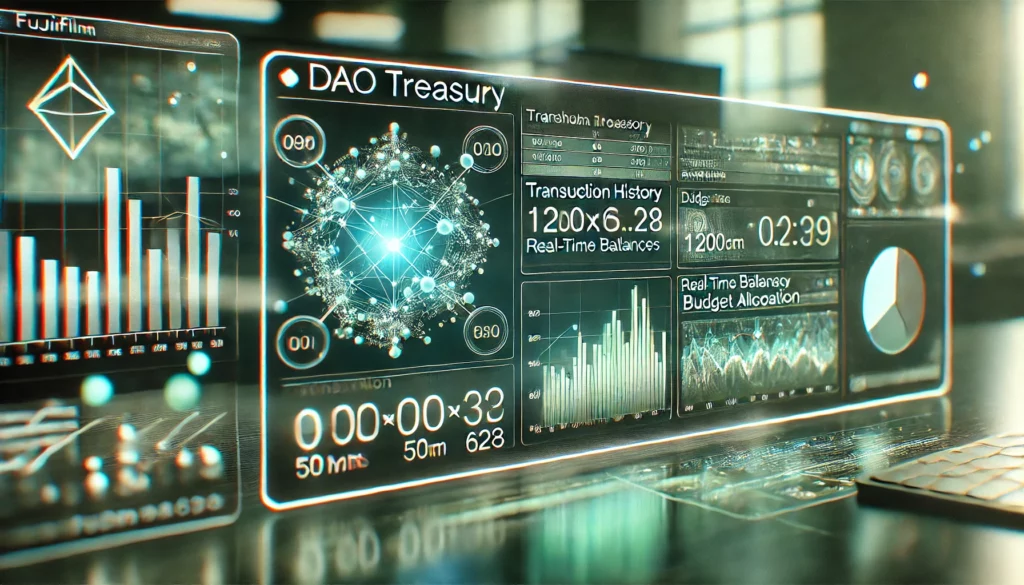DAOs explained: Understanding decentralized autonomous organizations and their use cases
A new era of governance and collaboration
Imagine an organization where decisions are made collectively, without the need for a traditional hierarchy. No CEOs, no board of directors—just a community of people collaborating transparently through coded rules. Decentralized Autonomous Organizations (DAOs) are making this a reality, enabling new ways to structure, fund, and manage projects without central authority (watch our short educational video).
In this guide, we’ll break down what DAOs are, how they work, and explore some of their most promising use cases. By the end, you’ll have a clear understanding of why DAOs are reshaping governance, collaboration, and community-building.
What is a DAO? Understanding the basics
A DAO, or Decentralized Autonomous Organization, is a blockchain-based organization that operates according to rules encoded as smart contracts, without a central authority. Members of a DAO participate in governance by voting on proposals, shaping the direction of the organization through a decentralized decision-making process.
DAOs are primarily built on Ethereum and other blockchain networks that support smart contracts. These smart contracts automate decision-making processes, reducing the need for traditional management roles and ensuring transparency and fairness.
Practical tip: Think of a DAO as an online cooperative where all members have a say in decision-making, managed through blockchain-based smart contracts.
Stat: The total value locked (TVL) in DAOs reached over $10 billion in 2023, reflecting their rapid growth and adoption.
Simplify how
Subscribe to stay ahead in crypto with tips, guides, and the latest blockchain insights delivered to your inbox.
How do DAOs work? Key components and structure
DAOs are designed to run autonomously with transparent, community-driven decision-making. Here’s a look at how they work:
- Smart contracts: The rules and processes of a DAO are encoded in smart contracts, which execute decisions automatically when certain conditions are met.
- Governance tokens: Members hold governance tokens that represent voting power. The more tokens a member holds, the greater their influence in DAO decisions.
- Proposals and voting: Members can submit proposals, and token holders vote on these proposals. Approved proposals are then executed automatically by the smart contract.
- Treasury management: DAOs often manage a treasury funded by members or investors. Spending decisions are community-governed, ensuring transparent use of funds.
- Transparency and security: Since DAO activities are recorded on the blockchain, all decisions and transactions are publicly verifiable, reducing the chance of fraud.
This structure enables DAOs to function without centralized control, allowing members to vote on key decisions and share in the management of the organization.
Quote: “DAOs are an experiment in self-governance and community-driven collaboration. They offer a glimpse of what a decentralized future could look like.” — Vitalik Buterin, Ethereum Co-founder.
Top use cases for DAOs
DAOs are used across various industries to innovate governance, management, and collaboration. Here are some of the most common and impactful use cases:
- DAOs in venture capital and funding: DAOs have introduced a new way of raising funds and investing through community-controlled venture capital funds. Platforms like The DAO and MetaCartel Ventures pool funds from members, who vote on investment opportunities collectively.
- Why it matters: DAOs offer transparency in investment decisions, giving smaller investors a voice in venture funding.
- DAOs in social and community projects: Many DAOs are built around social or community initiatives, allowing people to organize around shared goals. For instance, Friends With Benefits (FWB) is a social DAO that combines social networking with decentralized membership governance.
- Why it matters: Community DAOs empower members to drive social projects or support creative collaborations, fostering a sense of shared purpose.
- DAOs in content creation and curation:In the creator economy, DAOs are helping communities curate and fund content. For example, Mirror is a platform where writers and creators can publish content, with community members voting to fund their favorite projects.
- Why it matters: DAOs in content creation allow communities to support creators directly, providing a transparent way for creators to earn income and gain exposure.
- DAOs in non-profit and charity initiatives:DAOs are being used to manage charitable funds transparently, where donors can vote on how funds are used. Gitcoin DAO, for instance, funds open-source projects and charitable causes with community oversight.
- Why it matters: DAOs provide transparency in charitable giving, ensuring that funds are distributed as promised and with community support.
Quick tip: If you’re interested in joining a DAO, explore platforms like Aragon, DAOstack, or Snapshot to see active DAOs and their missions.
Benefits of DAOs: Why they’re gaining popularity
The popularity of DAOs stems from their unique benefits, which address some of the limitations of traditional organizations:
- Decentralized decision-making: DAOs democratize decision-making, giving all members a voice rather than relying on a top-down structure.
- Transparency and trust: Blockchain technology ensures that all actions and decisions within a DAO are visible to all members, building trust within the community.
- Global accessibility: DAOs are open to anyone with internet access, offering global participation without the limitations of borders.
- Reduced costs: Without middle management, DAOs reduce administrative costs, allowing funds to be directed toward core activities and member benefits.
Stat: DAOs can reduce operational costs by up to 30% compared to traditional organizations by eliminating centralized management.

Challenges and risks of DAOs
Despite their advantages, DAOs face several challenges and risks:
- Smart contract risks: Flaws in smart contracts can make DAOs vulnerable to attacks, as seen in the infamous 2016 hack of The DAO.
- Regulatory uncertainty: Governments are still determining how to regulate DAOs, which could affect their legality and tax status.
- Coordination issues: DAOs rely on community voting, which can slow down decision-making and create inefficiencies in reaching a consensus.
Practical tip: Before joining a DAO, research its governance model and any previous audits to ensure it’s built on secure smart contracts and has clear, fair voting processes.
The future of DAOs: A new governance model?
DAOs are transforming how we think about governance and organization, offering a decentralized alternative to traditional management structures. As blockchain technology advances, DAOs are expected to expand into more sectors, including finance, government, and social initiatives. With community-driven governance and blockchain transparency, DAOs have the potential to lead a new era of organizational structure, where members hold the power.
Conclusion: Exploring the potential of DAOs
Decentralized Autonomous Organizations (DAOs) are more than a trend—they’re reshaping the possibilities of governance, collaboration, and innovation. By understanding what DAOs are, how they work, and the benefits they offer, you’re better equipped to navigate and potentially participate in the future of decentralized organizations.
FAQs
Here are answers to some frequently asked questions.
A DAO, or Decentralized Autonomous Organization, operates without central leadership. Instead, it uses blockchain-based smart contracts to automate and decentralize decision-making, giving all members a say in governance. Unlike traditional organizations, DAOs are typically open, transparent, and globally accessible.
Joining a DAO usually requires purchasing or holding governance tokens. These tokens grant you voting rights and influence in the organization. Many DAOs are accessible through platforms like Aragon or DAOstack, where you can participate in discussions and vote on proposals.
While DAOs offer transparency and accountability, they are not without risks. Vulnerabilities in smart contract code can lead to security breaches. It’s essential to research a DAO’s security audits and governance model before investing or joining.
Yes, many DAOs generate revenue through various means, such as investments, lending, or offering services. The revenue generated is typically managed by the community and can be reinvested or distributed according to the DAO’s governance model.
Popular DAOs include MakerDAO (focused on stablecoins), Uniswap (a decentralized exchange), Gitcoin DAO (funding open-source projects), and Friends With Benefits (FWB) (a social DAO). Each serves a unique purpose and offers a different structure for participation.
